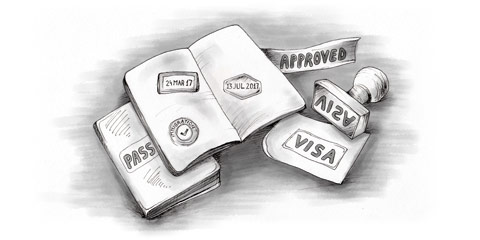There are seven types of student visa:
- Independent ELICOS – For overseas students studying English for Overseas Students;
- Schools – For students at primary or secondary school;
- Vocation Education and Training – For certificate and diploma students;
- Higher Education – For students studying for a bachelor degree or a graduate certificate or diploma;
- Masters and Doctorate;
- Non-award Foundation Studies/Other – For students on courses that don’t lead to a degree or other formal award;
- AusAID or Defence Sponsored.
Courses that qualify for a student visa include tertiary level studies at universities or colleges; courses at Technical and Further Education (TAFE) colleges; English-language courses; occupational or religious training; business study or training, e.g. secretarial and business courses; short courses at universities or colleges of advanced education; and study exchange arrangements between Australian and overseas educational establishments.
Students must have the financial resources to meet tuition fees (scholarships are available), return fares to Australia and day-to-day living expenses for the duration of their course – estimated in 2005 to be from $10,000 to $17,500 or more per year for a single person depending on where you're studying. Students should also have Overseas Student Health Cover (OSCH) or alternative private health insurance.
Secondary-level applicants for non-government schools must first obtain an offer of a place, which must be confirmed by a letter from the school. Full fee-paying students from so-called ‘gazetted’ countries (with a lower risk of students overstaying their visas) should lodge their application for a visa after they've enrolled and obtained an Acceptance Advice Form (AAF). Full fee-paying students from non-gazetted countries should lodge their application for a visa before paying tuition fees, confirming enrolment and obtaining an AAF.
Students must usually be attending full-time courses, but are permitted to take part-time jobs of up to 20 hours a week to help cover their living costs, plus a full-time job during the summer break. The spouse of a postgraduate student may be permitted to work full time and other dependants up to 20 hours a week. However, if you wish to work you should apply for a visa that includes ‘permission to work’.
In order to retain a student visa, you must have a satisfactory attendance and academic results record. On completion of your course, you must leave Australia when your visa expires, for which an undertaking must be given in writing. It isn’t possible to switch from a visitor’s visa to a student visa while in Australia.
Information about student visas is provided in Student Entry to Australia (form 1160i) and Application for a Student (Temporary) Visa (forms 157a).

